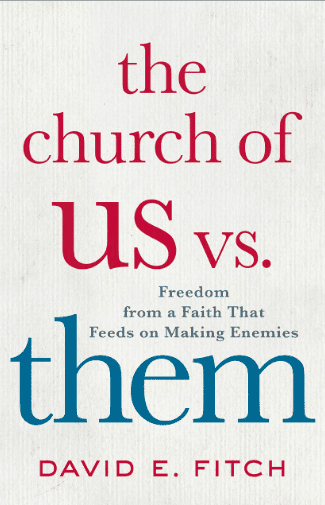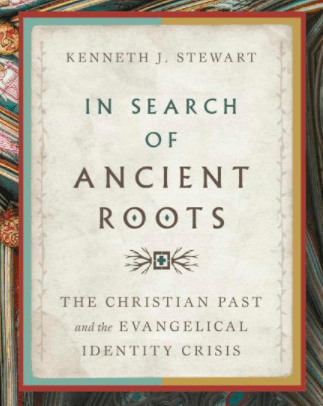I recently received, courtesy of the publisher, a copy of the new book The Anointed: Evangelical Truth in a Secular Age by Randall Stephens, an associate professor of history at Eastern Nazarene College and Karl Giberson, formerly a professor of Physics at Eastern Nazarene. Giberson has now moved on to concentrate on a number of writing projects.
 In this book Stephens and Giberson examine several different facets of American evangelicalism to explore the manner in which “America’s populist ideals, anti-intellectualism, and religious free market, along with the concept of anointing – being chosen by God to speak for him like the biblical prophets” influence a broad range of evangelical and fundamentalist beliefs and practices.
In this book Stephens and Giberson examine several different facets of American evangelicalism to explore the manner in which “America’s populist ideals, anti-intellectualism, and religious free market, along with the concept of anointing – being chosen by God to speak for him like the biblical prophets” influence a broad range of evangelical and fundamentalist beliefs and practices.
Chapter five, A Carnival of Christians, discusses the evangelical subculture and the way Christians grow up and live within this culture, separated to an extent from the broader western culture. The presentation is shaped around the experience of a young Christian – Paul – who grew up embedded in this culture in the southeastern United States. Stephens and Giberson focus on two specific aspects of evangelical culture and the way they shape Christians – the culture of the local church and the Christian family and the culture of Christian higher education. Both of these are worth some discussion and thought. In order to do justice to each I am going to consider the issues raised in this chapter in two separate posts. The post today will look at the local church and Christian culture. The post Thursday will turn to consider aspects of higher education and what is termed the “carnival of Christians“, the diversity of Christians views that deviate from any individual’s stereotyped expectation.
The evangelical subculture for Paul, and for many over the last several generations, has been an immersion in a parallel American culture, existing alongside the mainstream, but separate from it in many ways. This culture includes church services, children and youth activities, adult gatherings, music (traditional hymns, gospel choruses, and CCM), entertainment, t-shirts (“God is Totally Awesome” or “His Pain, Your Gain”), candy (Testamints and Faith Pops), even golf balls (Top Flite’s Gospel Golf Balls imprinted with bible verses).
The role of the local church in the evangelical subculture, however, loomed large – much larger than the somewhat cheesy merchandise. To be part of the church was to belong to an extended family. Parents were committed to the church and children were raised embedded in the community of the church.
Do you think that church is an extended family?
Is this evangelical subculture a positive or a negative influence?
Stephens and Giberson present a broad ranging description of the generic evangelical upbringing. Among the points they highlight are the close community and deep social bonds of the local church.
[Paul’s mother] expected the … congregation to help. “Just like in out home I loved you, cared for you, supported and encouraged you – spent time, effort, and energy investing in you, I expected the same from the church,” she told Paul. … The church was our extended family – it was the place to be.” (p. 185-186)
This freed his parents to attend adult Sunday school classes and the preaching service. The socially robust programs in churches like … nurture community as people spend time with one another’s children, take turns teaching classes, drink coffee together, and collaborate on running what are often the most substantial social programs in the local community. (p. 186)
Evangelical children experience this world of goods and services to varying degrees. All of them would attend Sunday school, where they would learn stories and songs; most would listen to Contemporary Christian Music and read Christian books and magazines. … Like any subculture, levels of commitment and participation vary as children first absorb values from their parents, then from their peers and teachers, and finally work through things on their own. (p. 209)
The church as extended family, church as a “second home” … whether moderately large (the church Paul grew up in was ca. 3000) or smaller (the church I grew up in was more like 400 give or take) … this is the kind of church many of us grew up in under the evangelical or fundamentalist umbrella. And it was commitment and involvement – 2-3 hours on Sunday morning, another 2 or 3 Sunday evening, Wednesday evenings, Bible Studies, Family camps, retreats, VBS, Christmas programs, mission trips, local mission projects, and more. Without waxing overly nostalgic, it was a place where people were known as individuals – from the babies in the nursery to the octogenarians.
This immersion into the Evangelical subculture was centered on church. Some children within the culture were educated in conservative Christian schools (like Paul and some one to two million others), but most were in public schools. The commitment and immersion was not significantly less for those in raised in the public schools because the experience centered on the local church as extended family.
The education aspect of this immersion experience has changed significantly in recent years. Over the last 10 or 20 years a million or more children have been homeschooled. According to Stephens and Giberson 1.5 million children were homeschooled in 2008, up 74% from 1999, and some 70% of these students are thought to be evangelical, but there are no good polls providing firm data (p. 189).
That was then … but is it now? As with many of the points made by Stephens and Giberson in their book, this description, accurate for Paul and for many of us from earlier generations, may be somewhat out of date, behind the times. While immersion in the subculture formed my childhood and to a large extent, that of my children, I am not sure that this is the expectation or intent of many today as we moving deeper into the 21st century. Churches are not organized in the same fashion and don’t have the same goals and purposes.
In particular Churches are no longer extended family, don’t see themselves as such and are not expected by most who attend to be such. Rather than deep social bonds and shared experiences participating in worship and taking turns teaching, we have a much looser association of individuals and family units who gather for worship. The self-sufficiency of the homeschool movement may be part of this overall cultural shift – not a cause, but another facet providing insight into the cultural changes. We are a very individualistic culture. Self-sufficiency and self-feeding are the watchwords for the future, not interdependence and community.
Although the children do still attend Sunday school, where they learn stories and songs together with parents freed to attend the worship service.
But perhaps I’m missing something. I’d like to know what you think.
Is church as a second home good, neutral, or a net negative?
Is it important for children? Is it important for adults?
And perhaps more to the point …
Is the community based evangelical subculture becoming a relic of the past?
If you wish to contact me directly you may do so at rjs4mail[at]att.net.
If interested you can subscribe to a full text feed of my posts at Musings on Science and Theology.











